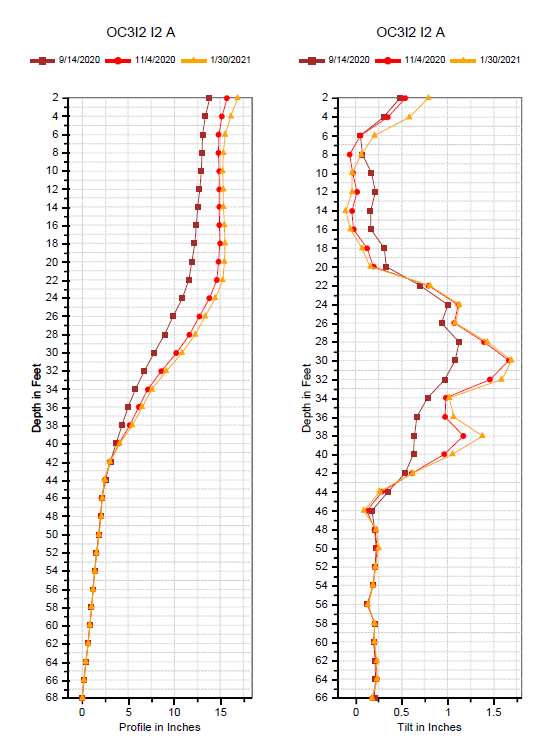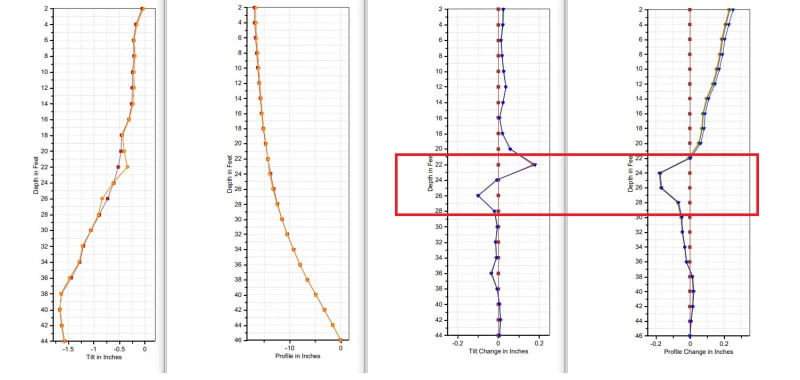learning2geotech
Civil/Environmental
Hi,
Please see attached photo. I understand that the tilt is calculated by sin(angle between the top and bottom wheels) times the probe length (2 feet). So how can the tilt readings at 22' and 26' changed significantly while the reading at 24' remains relatively the same, when the bottom and top wheels have to be at 22'-24' and then 24'-26'
Please see attached photo. I understand that the tilt is calculated by sin(angle between the top and bottom wheels) times the probe length (2 feet). So how can the tilt readings at 22' and 26' changed significantly while the reading at 24' remains relatively the same, when the bottom and top wheels have to be at 22'-24' and then 24'-26'


